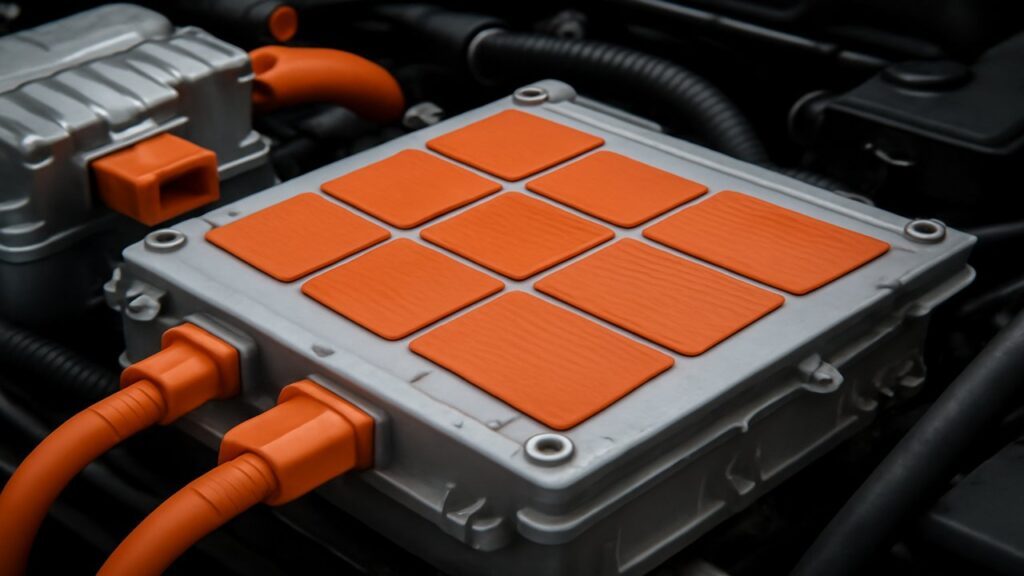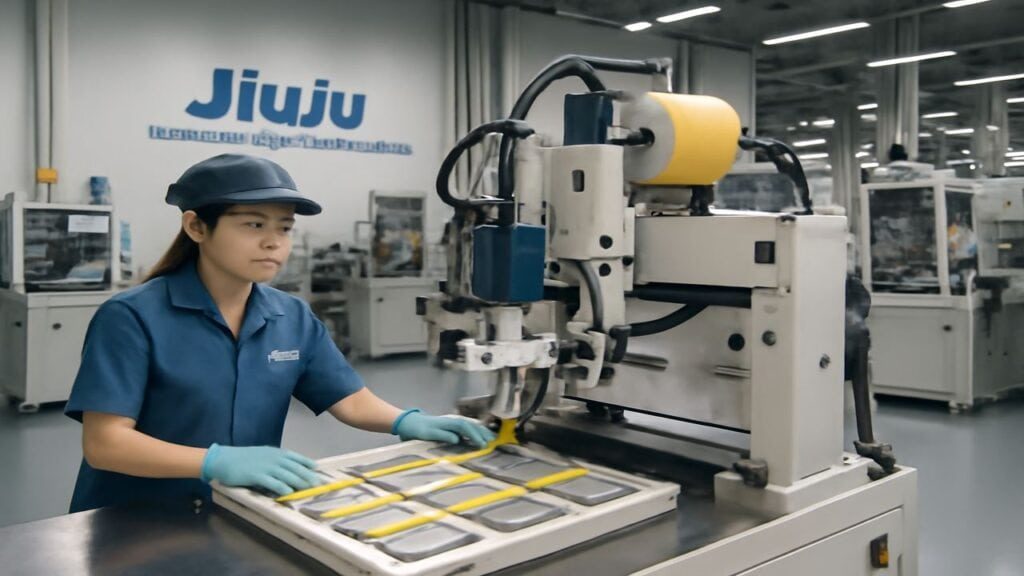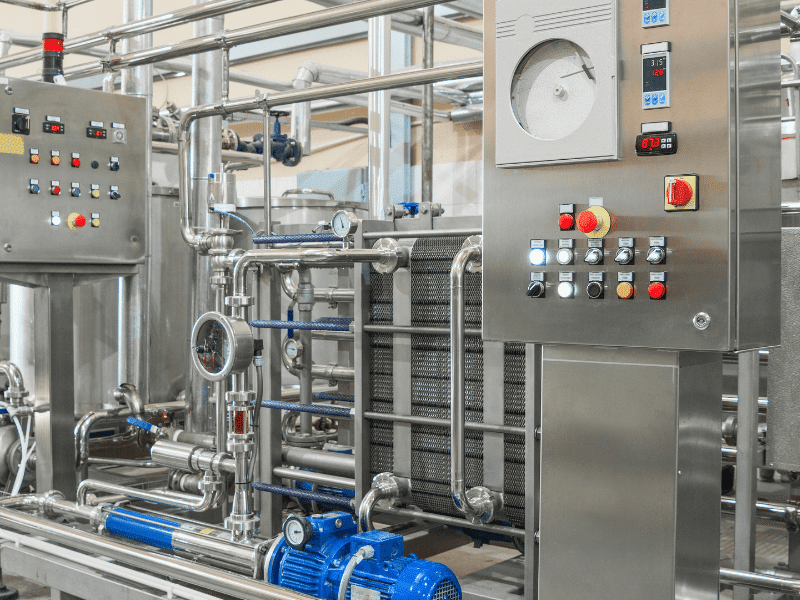Intorduction
The revolution in the Automotive Industry has just shifted the trend towards New Energy Vehicles (NEVs). NEVs include Battery Electric Vehicles, Plug-in Electric Vehicles/Plug-in Hybrid Vehicles, and Fuel Cell Electric Vehicles. This advancement from traditional vehicles to electric cars is not just part of a trend, it also overcomes greenhouse gas emissions. The emission of such gases accounts for global warming, leading the planet towards disaster.
Similarly, the working mechanism for all electric cars relies on sensors, chargers, and lithium-ion batteries. They produce a massive amount of heat while operating at peak, and there must be an optimal solution to decrease or control the heat. Thermal Pads are considered a valuable thermal management product for this task. These pads are designed to transfer the heat outside the component and fill the air gaps to enhance cooling efficiency.
In today’s informative guide, we will look at the contribution of thermal pads in improving the cooling performance of the New Energy Vehicles. Let’s start,

What is a Thermal Pad?
A thermal pad is a thermal interface material used in components for transferring heat outside and filling the air gaps for a better surface attachment. It is a solid, flexible, reliable, and value-for-money product powered with high thermal conductivity and electrical insulation features.
Thermal gap pads can be used in various products and components, ranging from low to high levels in different industries and categories. Examples include CPU, GPU, Consoles, Smartphones, Tablets, Electronics, Consumer Electronics, Medical, Automotive, and Defence Industries.
Manufacturing Materials
Base Material:
- Silicone, Acrylic/Graphite (Non-Silicone)
Thermally Conductive Fillers:
- Metal Oxide
- Aluminum Oxide
- Aluminum Nitride
- Boron Nitride
- Graphite
- Carbon Nanotubes
Others:
- Additives for better mixing and safety measures.
Core Features
Thermal Gap Pads are powered with thermal conductivity of 1 to 10 W/mK.
Thermal Gap Pads are powered with an operating temperature range of -40 to +250 Degrees Celsius.
Thermal Gap Pads are powered with complete electrical insulation features.
Thermal Gap Pads are available in different shapes and sizes.
Thermal Gap Pads are available in different thicknesses.
Thermal Gap Pads are easy to install and can be reused.
Thermal Pads offer longevity, reliability, and durability.

What are New Energy Vehicles?
New Energy Vehicles refer to cars running on electrical technology instead of traditional (gas/fuel/oil) sources. They are not just an innovation or upgradation in industry, but they also minimise harmful environmental impacts. These electric cars operate without the emission of gases or smoke.
Types of New Energy Vehicles
The following are the major types or models of New Energy Vehicles.
- Battery Electric Vehicles (BEVs): The battery electric vehicles operate completely on electric power provided by the rechargeable batteries
- Plug-in Hybrid Electric Vehicles (PHEVs): A combination of an engine, an electric motor, and a battery contributes to plug-in hybrid vehicles.
- Hybrid Electric Vehicles (HEVs): HEVs use a combination of an engine plus an electric motor, but they don’t support a plug-in feature like plug-in electric cars.
- Fuel Cell Electric Vehicles (FCEVs): FCEVs use a combination of hydrogen and oxygen to produce electricity. These are the cleanest among all electric cars.
Benefits of New Energy Vehicles
- NEVs contribute to controlling air pollution with low to zero emissions.
- NEVs reduce noise pollution (mostly soundless)
- NEVs reduce fuel/gas/oil/diesel consumption.
- NEVs contribute to achieving high performance and a smooth driving experience.
- NEVs offer recharge at public charging stations.
- NEVs feature an advanced thermal management mechanism.
Top Contributors
The demand for NEVs is increasing among customers worldwide, while the following are the top contributors who have adopted the electric vehicle technology. They have a notable increase in the production of electric cars in the market.
- China
- United States of America
- Multiple Developed European Countries
- Soon, it will be every country in the world
Applications of Thermal Pads in Electric Vehicles

As we discussed earlier, the operating technology of advanced electric cars is based on multiple components. Examples may include batteries, power control units, inverters/converters, power motors and other sensors. Each has a major role in providing the required energy/power to the car.
When operating under a full load, these components/sensors generate heat. Continuous heat may result in power drops or affect the battery’s health. So, it is necessary to control the rising temperatures to avoid any operational errors. Here, the important role of thermal pads begins to play. Let’s check how
1: Battery Thermal Management
- Generally, lithium-ion batteries produce heat while operating. Similarly, in electric vehicles or cars, when the charge/discharge procedure occurs, the temperature of the batteries increases. This could negatively impact the performance and lifespan of batteries. Thermal Pads transfer that heat from the battery cells to the heatsink. The pads keep the temperature range in the optimal Celsius, and the batteries function efficiently.
2: Electric Motors
- In new energy vehicles (NEVs), an electric motor provides adequate torque. It assists in maintaining the required amount of power, energy consumption, and smooth drive. When an electric motor operates, it also produces a massive amount of heat. Thermal Pads are used in the motor house to move the heat outside the component. It results in controlled temperatures and the provision of sufficient power.
3: Onboard (OBC) Charging System
- The onboard charging system usually maintains the conversion process of AC to DC. The OBC optimises the fast charging speed and required energy. It produces heat during the conversion, which can result in power drops or fluctuations. Here, thermal gap pads are utilised to balance the temperature range smoothly. These pads improve the thermal performance and avoid any power fluctuation that negatively impacts the performance of NEVs.
4: Power Electronics (Inverters/Converters)
- Power electronics here refers to the core functionality of inverters and converters. They convert the electrical energy from batteries and transfer the required power to the car. During this conversion, a specific amount of heat is also generated, which could affect the smoothness of operations. Thermal gap pads ensure the odds of keeping the temperatures in the optimal range, and the new energy vehicles provide a smooth driving experience as they should.
5: Other Cooling Optimisation
- The other domains where the contribution of thermal gap pads can’t be denied are the battery packs, the infotainment player, the car’s dashboard light, the car’s headlights, and others. Although some of these don’t produce massive heat, but are still controlled by the leading role of thermal gap pads.

Benefits of Using Thermal Gap Pads in NEVs
a) Improved Lifespan
- Thermal Gap Pads help to improve the lifespan of new energy vehicles. When temperature levels are optimised accordingly, components perform smoothly without extra load.
b) Improved Performance
- Similarly, when the components function within their best capability and at controlled temperatures, batteries deliver the required power, and vehicles perform at peak.
c) Improved Safety
- The batteries in new energy vehicles may explode when exposed to high temperatures. Thermal Gap Pads overcome the risk of overheating and keep the components at an optimal temperature.
d) Low Maintenance Cost
Compared to other thermal interface materials, thermal pads are considered more convenient. They can serve for a long time without any maintenance, and can even be reused at specific moments.
Future Trends in Thermal Pad Technology for NEVs
– High Conductivity
- The graphene and carbon nanotubes in thermal gap pads provide high thermal conductivity ratios. This inclusion makes pads compatible for high-end cooling tasks.
– Eco-Friendly Pads
- The new energy vehicles (NEVs) are focused on environment-friendly options with less emission of gases/smoke. Advanced gap pads are manufactured using bio-based polymers (recycling).
– Smart Thermal Gap Pads
- Future innovation in thermal gap pads is expected to bring smart features, connecting advanced sensors to these pads to show the live temperatures and their optimisation.

JiuJu Thermal Gap Pads
JiuJu has been a leading name in the thermal management market for the last two decades. We are experts in manufacturing multiple thermal interface materials, shielding, and bonding solutions. Car radiators and heat sinks are also part of our production list.
Talking specifically about the TIMs, one of our renowned products is the thermal pad. JiuJu’s manufactured pads are used by top brands around the world. Lenovo is one of those that has equipped its laptops with our high-quality gap pads to optimise the temperatures.
Moreover, we have partnered with 500-plus business clients using JiuJu’s products. Our monthly production capacity achieved the target of more than 20 tons of these materials. The product stock at JiuJu always remained booked because of high customer demand.
So if you are also searching for a reliable business partner, JiuJu is the platform that always fulfils its commitment. Contact our customer support and ask them to create a detailed quotation for your products. Bulk buyers will be rewarded with discounted and wholesale rates.
Final Remarks
The new energy vehicles (NEVs) are undoubtedly a revolution in the automotive industry. It is expected that customers will completely shift to electric technology soon. The NEVs are advanced, feature-rich, and free from greenhouse gas emissions. Similarly, the Thermal Pads in parallel also have a strong grip in the automotive industry because of their reliable cooling functionalities. They have efficient capabilities to supervise the cooling management of electric vehicles. The smart thermal gap pads would be a solid choice in the near future.
Never compromise on the cooling management of your components. Visit JiuJu’s products page to discover high-class thermal management products.
FAQs
Q: How can one identify the quality of the Thermal Gap Pad?
A: The manufacturer behind the product is proof of its quality. It is suggested that you buy products from a reputable brand or manufacturer.
Q: Do all electric cars run without gasoline?
A: No, some electric cars run with a combination of engine power, too. Operational flexibility is present in each specific model.
Q: What is included in Greenhouse Gas Emissions?
A: They include a mixture of Carbon Dioxide (CO2), Methane (CH4), and Nitrous Oxide (N2O.)





